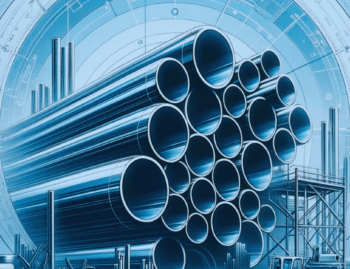History of Steel Production in Japan
Japan’s emergence form a feudal society to the modern world in the late 19th century depended greatly on its capacity to produce iron and steel.
After the disaster of World War II, Japan was able to rebuild its shipbuilding, automobile and industrial machine industries. By 1970, Japan was the third largest steel producer in the world.
The Ministry of International Trade and Industry (MITI) had much to do in coordination that rapid growth. Japan imported western technology and hardware to modernize their steel mills. MITI aided in locating new steel mills in prime locations, helped organize the Japanese domestic market and provided government backing for companies like Yawata Steel.
Financial Crisis in Asia 1995-1999
Because Japan and other Asian countries became mired in a financial crises between 1996 and 1998, the yearly utilization of finished steel fell by nearly 30 million tons. The annual U.S. consumption of steel rose by 12.5 million metric tons during that same time period.
Resurgence of Asian Economy 2000-2010
As Asia regained its financial footings at the beginning of the 21st Century, led by China, industrial growth boomed.
While the US annual GDP growth between 2000-2010 was 2.3 percent, the GDP number for all of Asia averaged nearly 7.0 percent.
Automobile production, especially in South Korea and Japan, exploded in growth. This surge demanded more and more steel. Japan’s steel mills once again roared into full production during that decade while US steel mills went into decline.
Between the years 1999 through 2010, the U.S. annual consumption of finished steel in fell by 42 million metric tons while annual consumption of finished steel in Asia increased by 501 million metric tons.
State of Japanese Steel Today
The election of President Trump in 2016 and his pledge to “make America strong again” won him votes, but foreign countries took it as warning that tariffs on imported goods might be on the horizon.
Japan, now the world’s second-largest steel producer, was especially concerned about the rumble of “protectionism” coming from the new American President. Imported steel had long been a sore point with American steel producers because they have continually accused
Kosei Shindo, chairman of the Japan Iron and Steel Federation, warned Japanese steel producers about his concerns over President Trump’s leanings toward protectionism.He did note, however, that he sensed a softening in Trump’s tone recently.
Shindo advised his fellow steel producers to keep a close eye Trump’s actual policies and negotiations.
Trump has already issued a trade warning aimed directly at China, but the tone warned other exporters like Japan about dumping cheap steel on the U.S. market. The unspoken message was clear: continuing to sell cheap steel in the U.S. that American companies cannot compete with could lead to new tariffs.
President Trump has the legal ability to order investigations concerning steel dumping under a section of the Trade Expansion Act. This 1962 law allows the U.S. President to impose restrictions on imports if he feels there is national security threat caused by importing such a large percentage of a vital material like steel.
Japan’s steel industry is also concerned over the risks of a U.S. exiting from existing trade pacts like NAFTA. Any withdrawal from these trade agreements would be an economic blow to Asian countries.
Any protectionism action by the U.S. to bolster its own steel industry would mean a decrease in Japanese steel sales to American companies.











